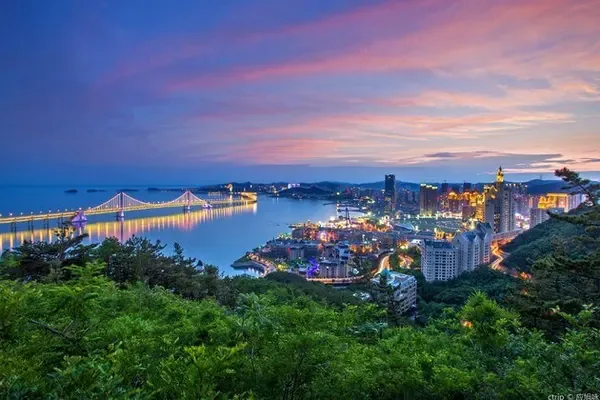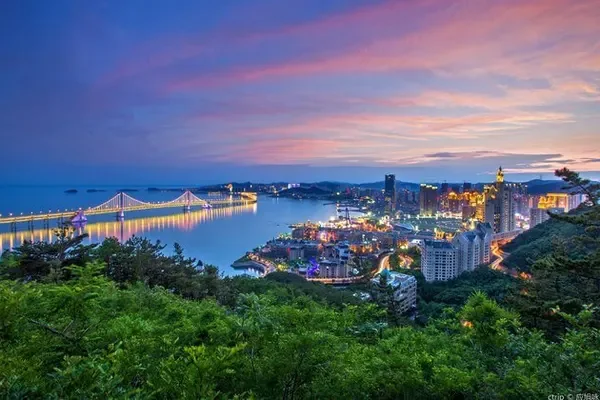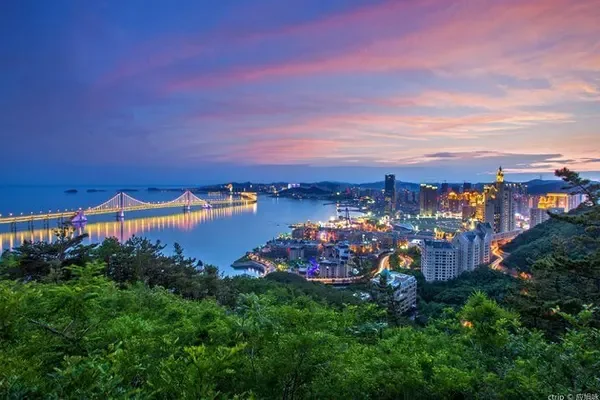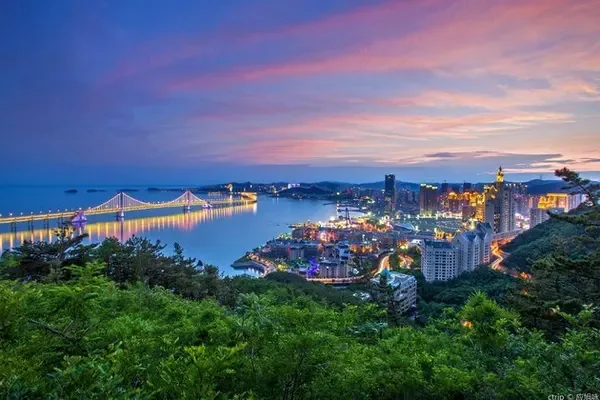Yining, as the capital of Yili, Xinjiang, should be mentioned most often in spring. At that time, the wild apricot blossoms on the Ili River Valley were in full bloom one after another. The Daxigou Fushoushan Flower Sea, Turgen Xinghuagou... one tree after another was in full bloom, just like pink cotton candy dotted the mountains. People can't wait to come to Yining, and then rush to various apricot forests to enjoy the flowers. This place is just a transit point for a short stay.

In fact, as long as you spend some time with this city, you will find that Yining also has a side that people yearn for. Yining's alias is "Gulistan", which means "flower" in Uyghur, and because of its abundant water and grass, it enjoys the reputation of "Flower City" and "South of the Yangtze River outside the Great Wall". The changes over time have formed a pattern of multi-ethnic settlements in Yining. 37 ethnic groups have thrived on this land, creating brightly colored dwellings everywhere. Whether it is courtyards, streets, or even bazaars, it has a unique cultural flavor.

Today, I recommend a two-day tour route in Yining. You can not only stroll around several characteristic streets in the urban area, but also appreciate the surrounding lakes and mountains, and experience the beauty of Xinjiang from a different perspective.
Recommended route:
D1: Liuxing Street - Accordion Museum - Orthodox Church - Kazanqi - Yili River Bridge
D2: Swan Spring - Bazaar - Hanren Street
first day
Among the colorful folk houses in Yining, there are two most representative ones, namely Liuxing Street and Kazanqi. Let’s talk about Liuxing Street first. This old town with a history of more than 80 years looks like a hexagonal star from the air. The local old people call it “Atshaler”, which literally translates to Liuxing Street. Its various dwellings have different characteristics. , also known as the "open-air architectural museum".

In particular, the residences built by the Russians, an alien nation, are the largest. Orthodox churches, Russian cemeteries... Traces of the integration of China and Russia can be seen everywhere, and there are even large oak trees transplanted by the Russians. Therefore, on the first day of the itinerary, you can choose to stroll on Liuxing Street, while visiting the Russian-style buildings filled with mixed blood, while feeling the unique urban charm of Yining.

Passing by the bustling East Stalin Street, you can see eye-catching street signs: Liguang Street, Gonggong Street, and Sailamu Street, which means that you are about to enter the "distant Russian pastoral" - Liuxing Street. Going deep into it, each main street extends into several small streets and alleys, and each intersection is no more than 20 meters apart.
The buildings on both sides of the street have only 3 floors at the highest, which are very different from each other and somewhat similar. The Uighurs have domed arches, the doors and windows of the Hui people have beautifully woven gradient curtains and curtains, and the Russian houses have spires and high platforms. But without exception, they all present Russian-style sloping roofs and blue walls.


No. 8, 2nd Lane, Liguang Road, is a well-known accordion museum. The museum houses more than 800 accordions collected by Alexander throughout the world. The oldest one is nearly 300 years old. At that time, Alexander could not only play the accordion, but also repair it. He had a unique skill, which was different from ordinary organs that had to be sent back to the original factory for replacement parts. He made the bellows and reeds by himself, and he could tune the tune very accurately just by ear.

So when repairing the accordion in the small town was no longer a profession that could support his family, Alexander sorted out two rooms and turned them into a private museum. Now each accordion has a serial number, among which there are many antique-level boutiques, such as old antiques produced in Russia, Italy, Germany and other countries. Even people who don't know much about musical instruments can feel the cultural integration of the Soviet Union and China through these organs. It is worth mentioning that next to the museum is the restaurant opened by Alexander's brother, where the craft beer and Russian food are delicious.


Next to the Accordion Museum, I saw a gate with an Orthodox cross hanging on it, and asked about it and learned that it was a Russian cemetery. In 1965, the Russians guarding the cemetery returned to their hometown, and the new local Russians in Yining continued to guard it. The number of tombstones in the cemetery is increasing year by year, and the number of Russians in Yining is decreasing year by year. This place seems to be the end point for them to leave their hometown and come to Yining.

Behind the Russian cemetery stands the Orthodox Church of St. Nikolai. In 1937, the Yining Orthodox Church was built on Liuxing Street. This was the largest Orthodox Church in Xinjiang at that time. There were more than ten sets of large and small bronze bells inside and outside the church, as well as an all-bronze Madonna statue. It is said to be the only one in the world. One of the three. Later, due to historical reasons, the church was destroyed, and the Russians in Yining built a new one in the north of the center of the street in 2002.
Now every Sunday morning, Russians gather in the church to pray, and they also set up a long table to eat and chat. The only remaining Russians in Yining are trying to connect with this nation in their own way, and tourists can see the epitome of Russian pastoral life in the last century.

Kazanqi in Shinan District is a Uighur residential area, so named because it makes iron pots and sells iron pots. Rather than being a scenic spot, it is actually a well-preserved old city without walls and gates. Uyghurs advocate red, blue, green, white and other highly saturated colors, which are used in buildings like a rainbow. Against the background, it looks delicate and pure.


The commercial atmosphere in Kazanqi is not strong. On both sides of the street, there are still shops opened by Uyghur craftsmen engaged in traditional skills, including ironware shops, tailor shops, and flower hat shops. They inherit their ancestral business and use it as a joy of life.
No matter the residents or shop owners on this street, they are all warm-hearted. When they see foreign tourists, once they enter the house, they will treat each other with tea. When it comes time to eat, stay sincerely. If it happens to be a festival, the residents will always dance in beautiful national costumes, and the scene is very lively.

The well-known "South of the Great Wall" Ili River Basin is formed by the confluence of the Gongnaisi River, the Tekes River and the Hash River, and it is also the only river flowing westward in my country. On the opposite bank of Chabuchar, the beautiful Yili River Bridge spans it, which is also an excellent place to watch the sunset and feel the greenery.

In autumn and winter, against the afterglow of the setting sun, the Yili River creates a dreamy and illusory effect. The water mist refracts the golden light traces, showing charming light and shadow. Migratory birds either catch pairs and play, or fly with wings, and the dark yellow reeds and weeds are used as the background color, decorating a scene of ink and wash poetry and painting of the Yili River.

second day
An hour's drive from Yining City, there is a dreamlike Swan Spring Wetland Park, you can choose to charter a car or drive there. You can also choose to continue wandering in this city. I believe you will fall in love with it: the colors of various spring flowers colliding with cute houses, the ethnic customs of Tatar shops and Kazakh Bazaar... Finally, don’t forget to go to Yining for food Paradise - Hanren Street, taste the Xinjiang delicacies in the night market one by one.
Swan Spring, located on the north bank of Yili River in Xiaheleke Village, Yingtamu Township, Yining County, is the first choice for watching swans in Xinjiang in winter, because it is the largest winter habitat of mute swans in China. Since the winter of 1993, 5 swans have come to live here for the first time, and now the number of swans has reached more than 300.

By the Swan Spring in winter, the rime on the trees is crystal clear, and the misty mist covers the lake. The swans, in twos and threes, or in pairs, wander freely, appearing and disappearing from time to time. When the red sun rises in the east, the rime on the small trees and reed flowers by the lake are dyed red, and the swans stretch their elegant necks, making people feel like they are in a paradise. The best time to take pictures is in the early morning when the morning fog has not cleared. There are always a large number of photography enthusiasts gathered here, so it is very lively.

After returning to the downtown area of Yining, if the sky is still dark, you can visit the surrounding small bazaars before the night market is booming. But the bazaars in Yining are not as concentrated as in Kashgar, nor are there so many, but there are Kazakh bazaars in addition to Uyghur bazaars. There are Tatar shops and all kinds of Turkish goods on the street, and some special gifts make people unable to move their feet.

People in Yining always like to introduce Hanren Street to tourists in this way: if you don’t go to Hanren Street, you don’t count as having been to Yili. Hanren Street is one of the three great monsters in Yining. Although it is called "Hanren Street", there are actually not many Han people left. Before the 1970s, most of the residents here were Han Chinese, mainly from Tianjin Yangliuqing, thus developing a bustling commercial street. In its heyday, there were opera gardens, storytelling halls, and vendors selling all kinds of snacks. The crowds were surging and it was very lively.


Today, along the streets and alleys on the north and south sides of East Xinhua Road, you can still find several inland Han-style courtyard houses with four beams and eight pillars, showing the scene of Yangliuqing people living here in Tianjin. Now walking on Hanren Street, there is a lot of traffic and business is booming, and it is still one of the most prosperous places in Yining.

It is not an exaggeration to say "eating in Hanren Street", especially at night when it is the busiest time, when all kinds of delicacies are on the scene, and the street is dimly lit and full of stars. Vendors selling sesame oil and fruit, rice flower cakes, and steamed buns shouted endlessly. The cheapest hand-picked rice in Xinjiang, the meat that can be filled with a single skewer, the super-succulent big sheep's head, the mellow milk skin made by Kazakh herdsmen... only you can't think of it, there is nothing you can't eat.

On Hanren Street, you can appreciate not only the simple customs and customs of Yining, but also all the Xinjiang delicacies you dream of. If you have enough time, you might as well come here to experience it for yourself.
Some pictures come from the Internet



